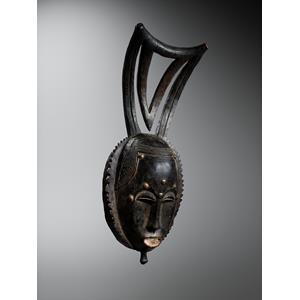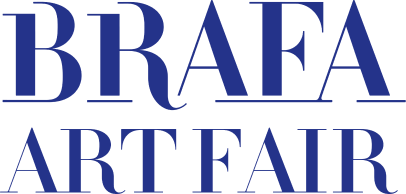DÉTAILS DE L'IMAGE

Claes Gallery
Yaure mask
Ivory Coast, late 19th century
Wood
H. 45 cm
Provenance: Dr. Alexander Rafaeli Collection (1910-1996), Israel
Publications/ exhibitions: Masks of Primitive Peoples from The Collection of Dr. Alex Rafaeli, written mention p.
5-19; n° 8/ Exhibited: The National Museum Bezalel, Jerusalem, 07.02-07.03.1953; Art of Primitive People. Masks from the collection of Dr. Alex Rafaeli. Sculptures from other Collections, written mention p. 3; n° 5
Exhibited: Museum of Modern Art, Haifa, November 1955
The Yaure people are closely associated with the Guro people, with whom they share the same Mandé roots. They live in a region filled with tree-lined hills, with rich gold deposits, stretching from the north-east of Bouaflé to the south-east of Lake Kossou, in central Côte d’Ivoire. Thanks to their geographical position between the Guro and the Baoulé, mutual stylistic influences can be found in their sculptures. Thanks to their sense of formal harmony, and above all the sophisticated finish of their ritual masks, Yaure sculptors have built up a reputation that travels beyond the borders of their small region.
Yaure masks can generally be recognised by the perforated edges around the face. These faces usually have a peaceful, inward-looking expression, conveyed in particular by their half-closed eyes. When talking about this apparent uniformity, Bohumil Holas (1969, p. 134) observed that among the Yaure, the attitudes struck during dance performances were much more of a distinguishing feature than the physiognomy of the mask. The smooth, pure compositions of these objects are more often enhanced with a sculpted ronde-bosse element
on top of the head. Here, this element takes the form of an upside down triangle, creating an abstract structure. Masks like this belong to the same group of ritualistic masks as Dyé masks (a category that can also be found among the Guro).



 TÉLÉCHARGER L'IMAGE
TÉLÉCHARGER L'IMAGE